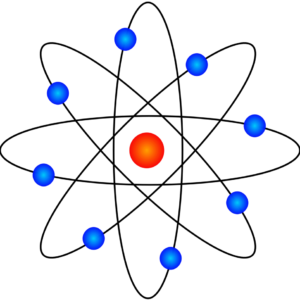Making the Unfamiliar Familiar: Metaphors as a Strategy for Clarifying Technical and Scientific Concepts
Published on January 15, 2019
For the engineers that I have taught, one of the most challenging communication tasks is explaining scientific concepts to less technical audiences, such as the general public. Yet explaining their work to the public – and other audiences with varying levels of technical know how – is a key part of many engineering positions, and doing this well is pivotal to success in their careers. A number of rhetorical tools can help with this task, but one is specifically designed for communicating unfamiliar concepts, via reference to familiar ones: metaphor.
You might think that metaphorical (or, more generally, figurative) language is more suitable for the Arts, but it has an important place in scientific communication and, significantly, science itself. Scientists communicating to scientists often have to resort to metaphorical language, particularly when confronted by new phenomena or ideas. For example, Maxwell used the concept of water pressure in tubes to describe to others Faraday’s concept of electric lines of force; waves in water were used to help explain the wave-like nature of light; and computer interface design relied on the physical analogy of a desktop as its foundational concept. Metaphor is key to understanding, explaining, and conceptualizing new ideas in all domains.
 At some point in your academic career, you’ve likely been taught that metaphor is simply a comparison between one thing and another*: but understanding its deeper structures can help tease out how they function, and how to deploy them effectively to get your meaning across. “Metaphor” is Greek for “transfer,” and we should understand it as transferring explicit or implicit attributes from one object to another. Take, for example, one of Shakespeare’s famous metaphors: “All the world’s a stage.” This short five word line carries so much implied meaning in its transfer of the attributes of a stage world to real life, as it works on the comparison between the “stage” and the real “world.” Here, “stage” is the source of the metaphor, the familiar term that lends meaning; “world” – in this case a reference to life in general – is the target, the object that takes on meaning from the source. We can already begin to assign some meaning to this metaphor based solely on this line, but Shakespeare follows up with more explicit similarities: “And all the men and women merely players; / They have their exits and their entrances.” (He goes on for much longer …)
At some point in your academic career, you’ve likely been taught that metaphor is simply a comparison between one thing and another*: but understanding its deeper structures can help tease out how they function, and how to deploy them effectively to get your meaning across. “Metaphor” is Greek for “transfer,” and we should understand it as transferring explicit or implicit attributes from one object to another. Take, for example, one of Shakespeare’s famous metaphors: “All the world’s a stage.” This short five word line carries so much implied meaning in its transfer of the attributes of a stage world to real life, as it works on the comparison between the “stage” and the real “world.” Here, “stage” is the source of the metaphor, the familiar term that lends meaning; “world” – in this case a reference to life in general – is the target, the object that takes on meaning from the source. We can already begin to assign some meaning to this metaphor based solely on this line, but Shakespeare follows up with more explicit similarities: “And all the men and women merely players; / They have their exits and their entrances.” (He goes on for much longer …)
Similarly, we might describe the structure of an atom (target) to someone unfamiliar as being like a planetary system (source), with its components (protons, neutrons, etc.) circulating around a central nucleus. The similarities between the source and the target are known as the grounds for the metaphor, and they’re essential for establishing the relationship between the two things. In scientific communication, the grounds are often made explicit (eg. This is why these two things are similar). Richard Dawkins, in the highly metaphorical The Selfish Gene (1976), spends nearly an entire chapter spelling out the grounds for how genes are like books in a library. The above example of atomic structure, for example, would probably rely on an explicit description of how the components circulate around a central nucleus, as in a planetary system, to work effectively.

While the grounds are essential for developing the initial relationship between the source and the target, another component of metaphor can be just as important to creating an accurate understanding of the unfamiliar concept, especially in scientific communication: the tension. Tension refers to those points of difference between the source and target, where they are not similar. Explaining or elucidating these can be key to a deeper understanding. For example, in Bill Bryson’s description of the structure of an atom in A Short History of Nearly Everything (2003), he starts with the planetary system metaphor above, but his explanation is dependant on an understanding of its limitations:
The picture that nearly everyone has in mind of an atom is of an electron or two flying around a nucleus, like planets orbiting a sun. . . . It is completely wrong, but durable just the same. In fact, . . . electrons are not like orbiting planets at all, but more like the blades of a spinning fan, managing to fill every bit of space in their orbits simultaneously (but with the crucial difference that the blades of a fan only seem to be everywhere at once; electrons are) . . the electron doesn’t fly around the nucleus like a planet around its sun, but instead takes on the more amorphous aspect of a cloud. The “shell” of an atom isn’t some shiny casing, as illustrations sometimes encourage us to suppose, but simply the outermost of these fuzzy electron clouds, [which is] just a zone of statistical probability. Thus, an atom . . . would look more like a very fuzzy tennis ball than a hard edged metallic sphere (but not much like either . . . )
For accuracy, Bryson’s metaphor demands that we both think about how the target is like and unlike the source, and he adds metaphors upon metaphors, piling on grounds and tension in teasing out the structure of the atom for a general audience.
Remember, then, that the power of metaphor – especially when used to explain technical, scientific concepts – comes in understanding and identifying for your audience both grounds and tension. In using the familiar to explain the novel, you can employ both similarities and differences.
Care to try this out on your own? Take a concept that you’ve needed to explain to a general audience in the past, and try to find an appropriate source, spelling out the key grounds and points of tension. Decide which of those points need to be explicit, and which can remain implied.
*We’ll focus on metaphor here, but all figurative language (including simile or analogy) works on the same principle)

